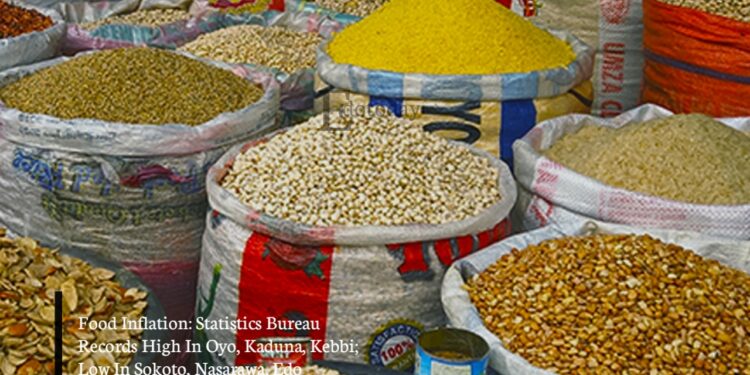The states’ profile study showed that the inflation rate of all products on a year-on-year basis was greatest in Kaduna at 33.33%, Osun at 32.08%, and Kebbi at 30.74%.
The National Bureau of Statistics reports Nigeria’s headline inflation rate jumped to 24.23 percent in March 2025, with the data noting that on a month-on-month basis, food inflation was greatest in Oyo at 19.74 percent, followed by Kaduna at 17.24 percent and Kebbi at 14.03 percent.
Sokoto at -14.10 percent, followed by Nasarawa at -9.91 percent and Edo at -5.78 percent, recorded the lowest rise in inflation on a month-on-month basis. But according to the survey, Oyo had the highest annual food inflation rate at 34.41 percent, followed by Kaduna at 31.14 percent and Kebbi at 30.85 percent.
On an annual basis, Bayelsa had the lowest increase in food inflation at 9.61%, followed by Adamawa at 12.41% and Akwa Ibom at 12.60%.
According to the states’ profile analysis, Kaduna had the highest annual inflation rate for all products at 33.33 percent, followed by Osun at 32.08 percent and Kebbi at 30.74 percent.
Following the report, Akwa Ibom saw the lowest annual increase in headline inflation at 12.81 percent, followed by Bayelsa at 14.02 percent and Sokoto at 14.83 percent. This was revealed by the NBS in its March 2025 Consumer Price Index and Inflation Report, which was made public in Abuja.
In comparison to the 23.18 percent reported in February 2025, the headline inflation rate increased by 1.05 percent, the study stated.
However, the analysis found that in March 2025, Kaduna had the highest monthly inflation rate for all products (18.85 percent), followed by Osun (16.49 % and Oyo (14.44%). Month-over-month inflation increased at the weakest rate in Sokoto (-8.66%), Nasarawa (-4.38%), and Kwara (-3.69%) provinces. The CPI was recently rebased by the NBS, which in February published the updated CPI statistics for January 2025.
According to Adeyemi Adeniran, the federation’s statistician-general, the rebasing was done to make sure Nigeria’s economic statistics appropriately depict the country’s actual economic structure.
He said that this included upgrading consumption baskets, improving data collection techniques, and incorporating new and growing sectors.
According to Mr. Adeniran, shifting the base year closer to the current time frame—2009–2024—was a step in the process of rebasing the CPI.












